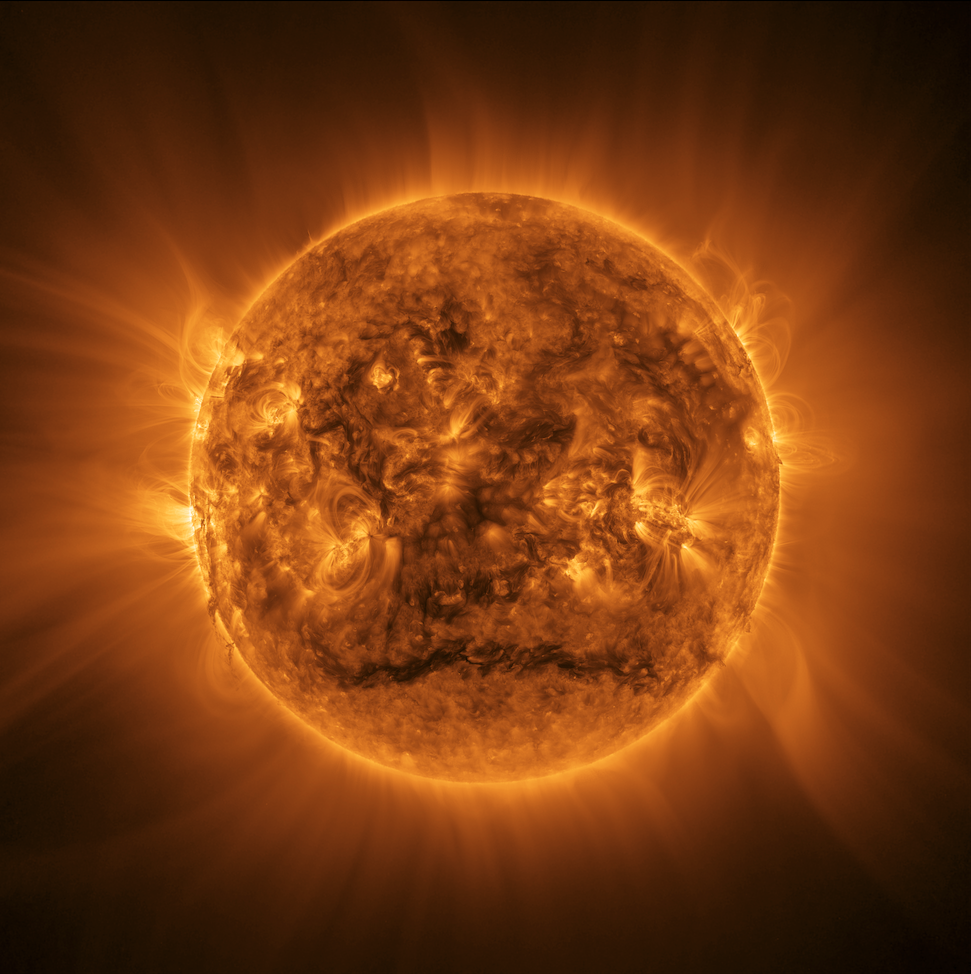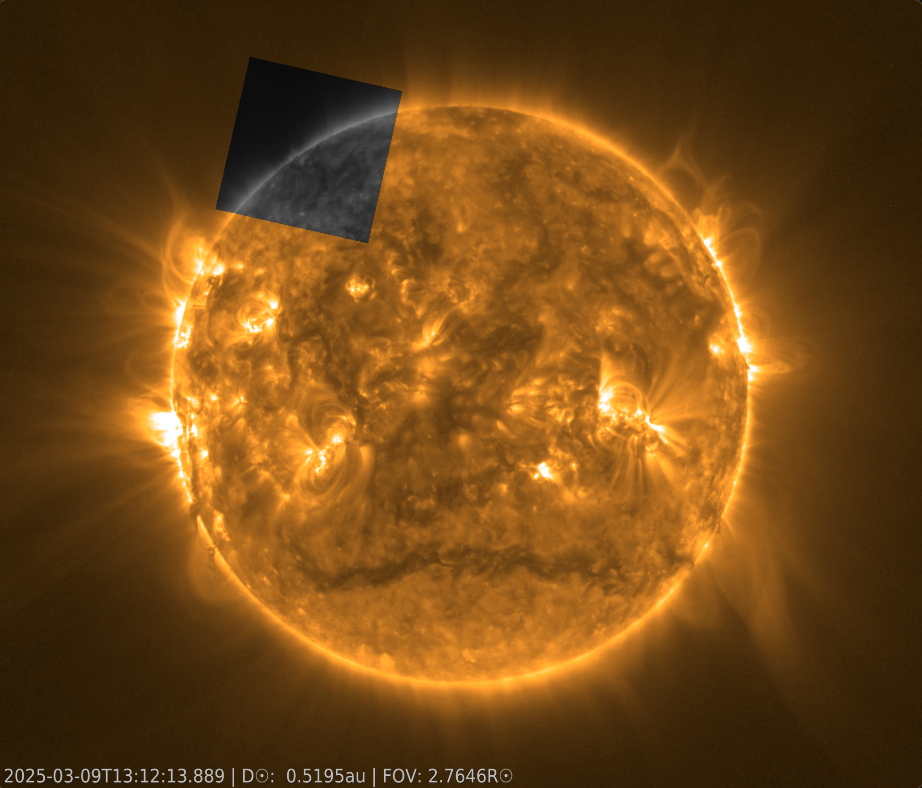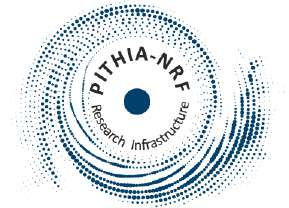Do you remember the highest resolution image of the Sun ever made? This image, showing the mesmerising details of the solar atmosphere in more detail than had ever been done before, received many enthusiastic reactions. And so we did it again, and now we even combined images from two telescopes!
This is the result - click on the image for the 12500 x 12500 pixel image:
How did they do it?
The team that operates the instrument EUI onboard the spacecraft Solar Orbiter decided to make a broad view showing the sun and its huge magnetic tentacles stretching out far into space. EUI consists of 2 telescopes that ‘see’ the extreme ultraviolet light from the sun. Its Full Sun Imager (FSI) telescope photographs the solar surroundings, while the High Resolution Imager (HRI EUV) telescope photographs the sun itself. Afterwards, images from the different telescopes have to be combined. This is a software ‘tour de force’.
The procedure
- Take a background shot of the area around the Sun with the Full Sun Imager FSI.
- Split the sun’s surface in 25 squares.
- Point the 2.5 x 3.0 x 2.5 meter box-shaped satellite Solar Orbiter to square 1, while it is at a distance of around 74,5 million kilometers from Earth (about halfway between Earth and the Sun).
- Take pictures with the high resolution telescope HRIEUV.
- Repoint the whole satellite to the next square.
- Take pictures with the high resolution telescope HRIEUV.
- Repeat steps 5 and 6 until all 25 squares are photographed.
- Download the data and give it to Emil Kraaikamp, the creator of the EUI-instrument powerhouse software.
- Let him do his Emilomagic and merge all images.
- The finale: the widest high-resolution image of the Sun ever made is ready and reveals the many details of the corona.
Emil talks with full enthusiasm about the self-developed software: “I start from the background FSI image that I resample into smaller pixels comparable to the pixel-size of the HRIEUV images. The part of the background FSI image with the Sun itself can then be filled with 25 high resolution solar images.”
The making of in a movie
The animation shows the observations made on 9 March 2025, which were used to create this new mosaic. The movie shows the Sun and its extended corona as observed by EUI. A sequence of dark squares rushes over the solar disk. These highlight the 25 spacecraft pointings that were used to record very detailed observations over a smaller field-of-view with HRI. For each of these pointings 6 HRI and 2 FSI images were made, resulting in 200 images to be combined in one mosaic. Careful image processing by Emil Kraaikamp allowed to forge all these puzzle pieces together in one seamless image. True magic.
The magic is to glue the 25 HRIEUV images of the sun to the FSI image of the area around the sun such that you don’t see what part of the image is taken by which telescope. A complication comes in because the sun rotates and changes during the photoshoot and the magnetic structures might look a little bit different. The shoot therefore needs to be done in the shortest time possible to keep these changes minimal. Luckily, the mosaic powerhouse software can deal with a quirky photo model. This was already tested and proven during the making of the very first mosaic in 2022.
Experience the mosaic in its full size
The 2025 EUI mosaic will be shown on a 6 x 6 meter canvas at Nerdland, a science festival in Belgium on June 6,7,8 and 9.







